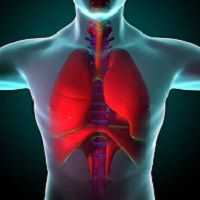Article
Less Than One-Fifth of Doctors Do Required Test for COPD
Author(s):
If post-bronchodilator spirometry is required for the diagnosis of chronic obstructive pulmonary disease (COPD), why doesn't every single primary care physician do it?

If post-bronchodilator spirometry is required for the diagnosis of chronic obstructive pulmonary disease (COPD), why doesn’t every single primary care physician do it?
A University-based Primary Care Clinic (PCC) analysis revealed that only 19% of patients with COPD had undergone spirometry testing, which determines how well the lungs work by measuring oxygen flow. With COPD being the third leading cause of death in United States, this is certainly a startling statistic. Sandra Adams, MD, from The University of Texas Health Science Center at San Antonio (UTHSCSA) in Texas, presented a way to combat the lack of testing at the CHEST 2015 meeting in Montréal, Canada.
“This is what it’s really all about… the patients,” Adams began the presentation. Between 2012 and 2013, only 64% of the participants reported having spirometry testing within the last 16 years in order to confirm the condition.
Most people would probably say to look at the physicians and institutions where spirometry rates were the lowest. “I actually took a different approach and went to the ones with the highest rates,” Adams expounded. After gathering information on why the high raters used spirometry, as they should, the researchers moved on to those failing to use it. Some of the physicians with low rates voiced the ‘if it quacks like a duck’ viewpoint when it comes to COPD. So the team didn’t hesitate to show them instances where COPD was actually not the correct diagnosis in cases following the mantra.
Improving confidence and knowledge when it comes to spirometry testing were important endpoints, but Adams explained that they “actually wanted to change behavior.”
The team implemented the WipeCOPD program which was designed so that it’s easy and “the clinician doesn’t have to think about.” The interactive program consists of 60 to 90 minutes of continuing education modules per month along with 30 minutes of “live” training sessions on how to perform spirometry moderated by a COPD expert. “The hardest part was getting them in the first module,” Adams said. But after clinicians started the first module, the amount continuing was high.
The rate of spirometry rates increased following the WipeCOPD interventions. It went from the initial 19% (14 out of 75 clinicians) to 56% (176 to 312 clinicians) in just five months. The third-quarter of the study is still in the process, however, rates are clocking in around 82%.
“We had input from COPD patients,” Adams noted. “I didn’t want to go in as a pulmonologist and say ‘this is what we’re going to do.’” She found that patients were more interested in participating in the program with this approach.
Clinicians tend to adopt spirometry testing for a few months and then teeter off, therefore, the researchers continue to follow-up on their practices. Within the next six months, the team is analyzing two additional University-based clinics to implement the system.
“Ultimately, we want to look at reducing exacerbations, hospitalizations,” Adams concluded. “This is just the start.”





